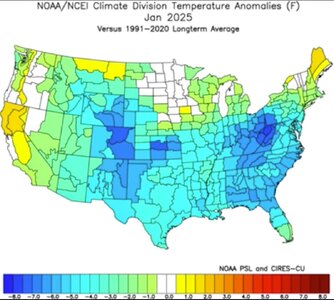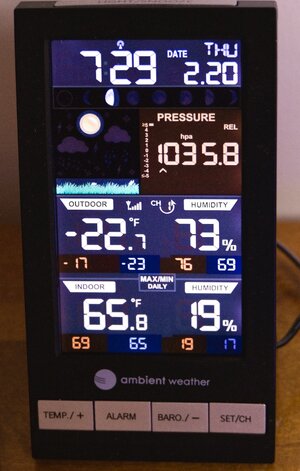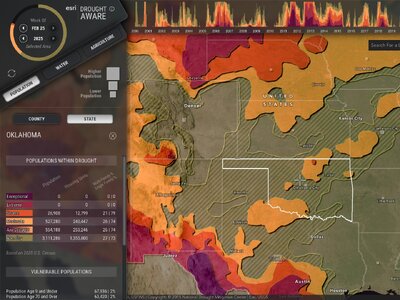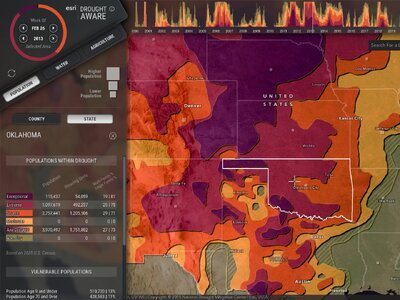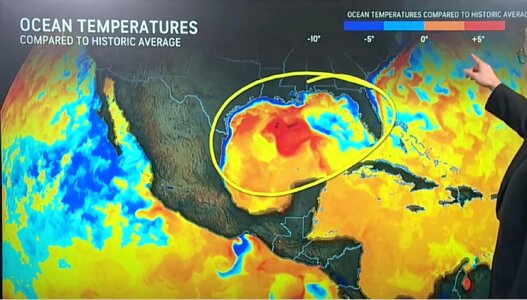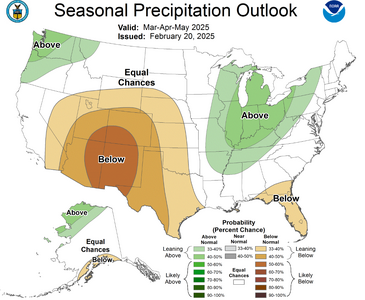Dan Robinson
EF5
With March 1 now in view of 14-day models, I figured it would be a good time to start the thread for this year's chase season.
All operational and ensemble models into this period (GFS, Euro, CFS, GEFS, etc) are in decent agreement of artic air still remaining persistent in Canada despite a gradual (climatologically expected) warming in the middle latitudes. The 850mb temperature charts show that there is yet no end to the threat of winter weather, as this air could easily be pulled southward into the CONUS on the back side of any strong system. The somewhat good news for winter weather haters is that models also agree on a deep eastern troughing regime that shifts the artic air mainly into eastern Canada by March 1, taking the Plains and central US out of the crosshairs of any southward surge.
As for chasing, there isn't much of interest through the period. All models indicate some form of a northward Gulf moisture surge close to March 1, though this is shown occurring in that firmly-entrenched deep eastern troughing regime with a briefly-lived shortwave developing on the western flank of the trough before getting absorbed into it.
The CPC extended range outlooks also reflect the influence of this eastern troughing regime, with precip focused on the east coast and warmer temperatures in the west.
The drought monitor shows the Plains are in mostly decent shape, with extreme drought areas mostly focused close to the Rio Grande valley that may or may not affect the EML source regions.
All in all, it doesn't look like any end to winter is yet in sight. 850mb temps and surface dewpoints have been my go-tos for watching for a springtime surge, and there just isn't much to support that for as far out as can be remotely discerned.
All operational and ensemble models into this period (GFS, Euro, CFS, GEFS, etc) are in decent agreement of artic air still remaining persistent in Canada despite a gradual (climatologically expected) warming in the middle latitudes. The 850mb temperature charts show that there is yet no end to the threat of winter weather, as this air could easily be pulled southward into the CONUS on the back side of any strong system. The somewhat good news for winter weather haters is that models also agree on a deep eastern troughing regime that shifts the artic air mainly into eastern Canada by March 1, taking the Plains and central US out of the crosshairs of any southward surge.
As for chasing, there isn't much of interest through the period. All models indicate some form of a northward Gulf moisture surge close to March 1, though this is shown occurring in that firmly-entrenched deep eastern troughing regime with a briefly-lived shortwave developing on the western flank of the trough before getting absorbed into it.
The CPC extended range outlooks also reflect the influence of this eastern troughing regime, with precip focused on the east coast and warmer temperatures in the west.
The drought monitor shows the Plains are in mostly decent shape, with extreme drought areas mostly focused close to the Rio Grande valley that may or may not affect the EML source regions.
All in all, it doesn't look like any end to winter is yet in sight. 850mb temps and surface dewpoints have been my go-tos for watching for a springtime surge, and there just isn't much to support that for as far out as can be remotely discerned.
Last edited:

